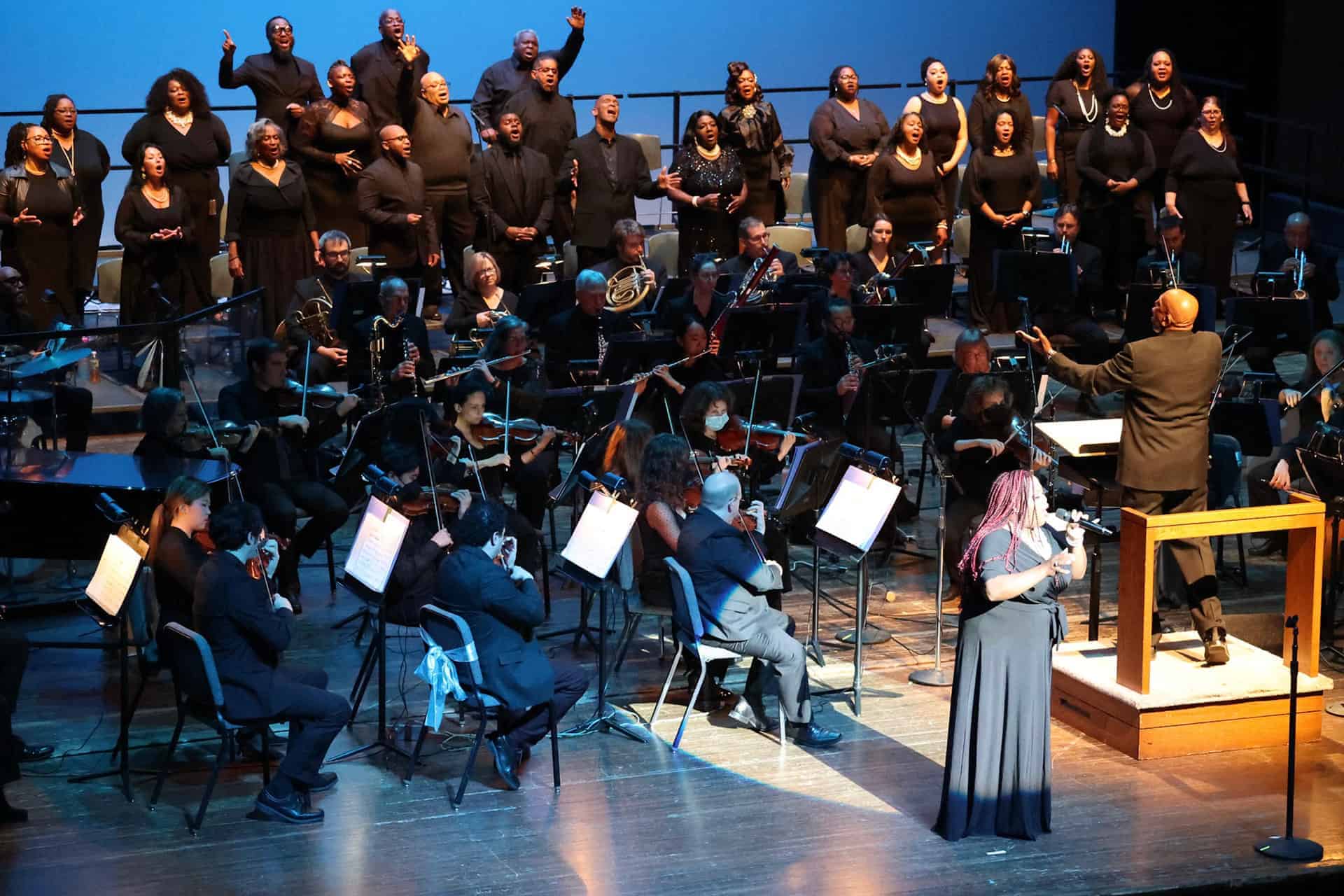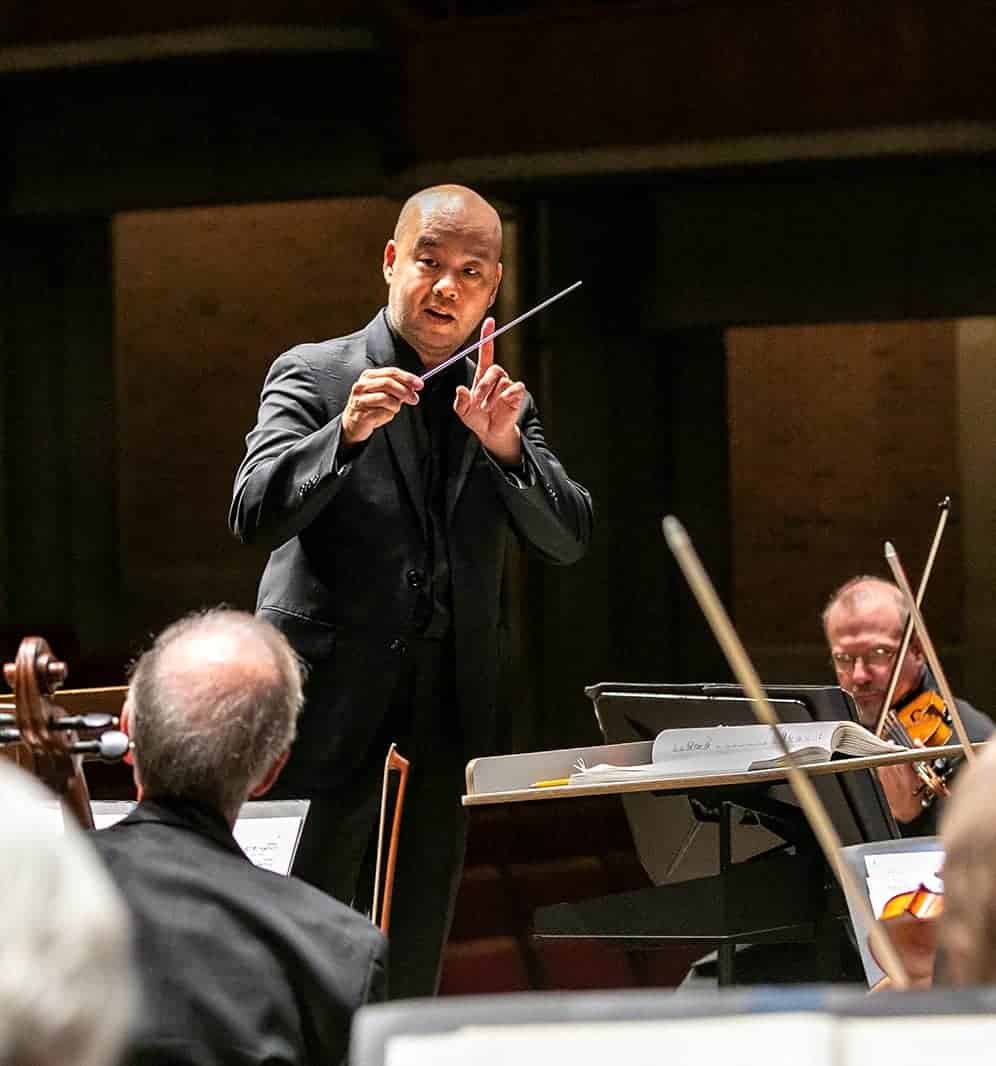Symphoria: Leveraging Structure and Space to Support Their Mission
How this arts organization is setting a new tone for how orchestral music is presented and enjoyed, and growing their capacity along the way.
Published February 8th, 2023, By Maximilian Eyle
Pam Murchison is acutely aware that supporting her organization’s mission may not necessarily mean embracing tradition. As the Executive Director of Symphoria, she spends every day working to decipher what the role of orchestral music is in today’s world. When the Syracuse Symphony Orchestra went bankrupt in 2011, there was little doubt that a new model had to be found. This has meant engaging new audiences by updating the spaces where music is presented and enjoyed, as well as how their organization itself is structured.

Pam Murchison took on the role of Executive Director with Symphoria in 2019.
Because Murchison is working to build something new, she draws inspiration from the many transformations that symphonic music has undergone in the past. “A couple hundred years ago, if audiences didn’t like what was being played, they would react with boos and hisses and things like that,” says Murchison, referencing a time when going to hear orchestral music was more of a social event in contrast with the quiet and restrained environment that many people today associate with going to the symphony.
Things began to change in the mid-1800s, when composers like Richard Wagner pushed to create a new type of space for their music: “He got tired of people coming to the opera to talk to their friends and be seen in a fabulous gown, so he built a concert hall in Bayreuth, Germany in an amphitheater style with very unforgiving seats. It was a total pendulum swing from a lot of the behaviors that people had come to expect in the European concert halls before that.”
Murchison sees her work today as a settling of that pendulum. A look through Symphoria’s performance calendar reveals a diverse range of experiences that serve the many different needs of Central New York’s population. “Music is for everybody, so we want to meet in the middle,” she says.

Symphoria runs a number of programs aimed at kids throughout their season. Admission for children under 18 is always free at their events.

A gospel showcase organized by Symphoria featuring a full choir was performed at Inspiration Hall on James St.
Some concerts are specifically oriented towards children, who are always offered free admission to Symphoria’s concert series . “At kids’ concerts parents will sometimes come up and apologize for their child being loud,” says Murchison. “I always say, ‘That’s why we do this!’ We set the setting so you feel comfortable.” They also offer a SPARK series made up of more informal concerts that feature three short acts with ample time for food, drink, and mingling in between.
For patrons who are seeking a quieter and more formal experience, Symphoria continues to offer their Masterworks concerts held at the Crouse-Hinds Theater.
“This is more about mindfulness, putting down your device, and enjoying the moment together with people more than it is about a stuffy experience,” says Murchison. These Masterworks performances also highlight new and overlooked composers alongside more established artists as a way to introduce audience members to new sounds and showcase pieces that have historically been overlooked.
Symphoria’s mission statement tasks them to “engage and inspire all community members throughout Central New York with outstanding orchestral and ensemble performances, and innovative education and outreach initiatives.” Murchison is passionate about growing the variety of spaces that Symphoria performs in because it directly ties back to their charter of reaching all community members – not just some. Last year they performed music celebrating the Haudenosaunee nation, collaborating with Leah Shenandoah, Bear Fox, along with other musicians from that community.
Sometimes this means exposing CNY residents to their music when they least expect it. Last year they were invited to be the keynote speaker at the C&S Companies annual leadership meeting , an engineering and architectural firm. “People’s faces lit up because it was a keynote like none they had ever had before. It was eye opening for people to see us in that setting, because they could say, ‘If this is for me here, then it could be for me there too’.”
The ability to effectively build spaces that support their mission would not be possible without having a corresponding organizational structure: just as Symphoria is intentional about having spaces that cater to CNY’s different musical tastes and needs, they also operate in a way that taps into the talents and perspectives of their board and staff. “In a lot of places, the music director and the executive director go into a room and fight about how much things are going to cost and then the board rubberstamps the season’s programming,” explains Murchison. “That is not what happens here.”
Symphoria is one of only two musician-led cooperative orchestras in the United States. This means that musicians are not only represented on their board of directors, but also vote on all new board member appointments.

Conductor Lawrence Loh leads Symphoria’s orchestra during a performance at the Crouse-Hinds Theater at The Oncenter.
Many staff are musicians as well, including Murchison who had more than a decade of experience playing the flute and piccolo professionally with the Akron Symphony Orchestra and the West Virginia Symphony Orchestra before taking on her role as Executive Director. Symphoria’s musicians also have a role in determining the programming and overall style of the orchestra, ranging from composer selection to decisions around imaging and dress code at performances.
The intimate relationship between staff and board also makes it easier for Symphoria to draw on their board members in ways that extend beyond regular meetings: Murchison describes how they invited one of their board members who is from the Black church community to be the opening speaker for a gospel showcase they held last year. “He spoke at the beginning to let people know – ‘I want to hear you stomp, let’s pass the peace,’ so that people knew that they could experience the concert the way they wanted to.” By bringing in diverse stakeholders and setting clear expectations, Symphoria has been able to grow their public and deepen the reach of their programming.
Her most recent assignment was for SCHF to grow their board by adding two new members each quarter over the next year. Their two most recent additions, Camille Marcotte and Gul Ahmad Hamidi, have been attending the Board Development Series hosted by The Gifford Foundation and the Community Foundation of CNY. “I’m hoping that by completing [the Board Development Series] I can bring that knowledge back and really see if we are fulfilling the roles we should be filling – and if not, how can we improve that,” says Camille. “We have grown to a new level with this grant which offers longer term funding and sustainability. We are hiring more staff, and trying to figure out how we can build clear boundaries around operations versus governance as we onboard more people.”
Looking to the future, Symphoria is poised to invest strongly in continuing these strategies through marketing campaigns and the hiring of a development director to attract funding for their growing program catalogue. A Gifford grant awarded in November of 2022 will help provide consultant support as they work to broaden their audience, maximize ticket sales, and strengthen donor relationships. Symphoria also participated in the first cohort of Gifford’s Embracing Disruption capacity building program from 2021 through 2022. Although many details of their plan remain undefined, leveraging space and structure to grow their community is sure to be central to their approach. “We sell vibrating air, so everything we do is people driven,” says Murchison. “Breaking down silos is crucial.”


